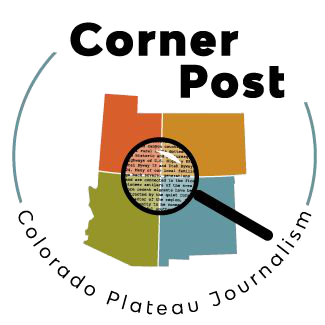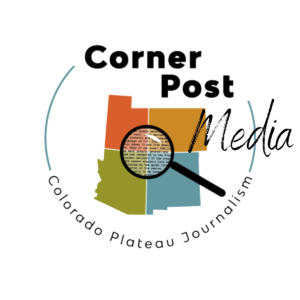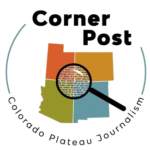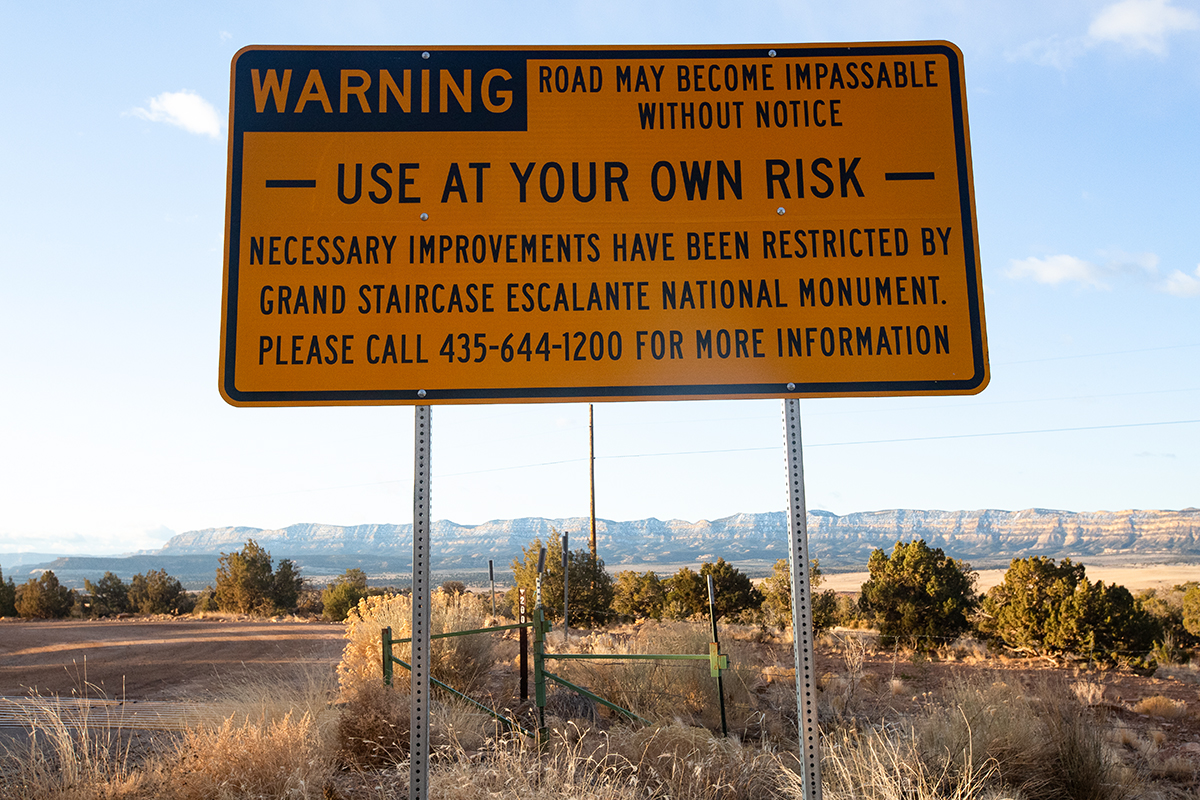
In-Depth
Healthy Land, Healthy People
Tribal Co-Stewardship Shows Benefits
for Public Lands and Native Communities

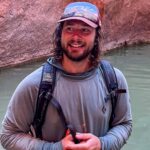
by Ian Marynowski – 5.15.2025 – 15 min. read
On Jan. 11, 2025, hundreds of people gathered on the steps of Utah’s Capitol Building for the Rally for Public Lands—a show of support for preserving Utah’s national monuments, national forests and national park lands.
A light flurry of snow chilled the crowd as author Terry Tempest Williams, Utah Senate Minority Leader Luz Escamilla, Regina Lopez-Whiteskunk of the Ute Mountain Ute Tribe and Latiné university student Louise Fernanadez spoke to the value of keeping public lands free of development, while underscoring what polling in Utah consistently states—that dismantling public land protections is overwhelmingly unpopular.
Among those speaking that day was Autumn Gillard, cultural resource manager for the Paiute Indian Tribe of Utah, who emphasized the very specific value of public lands to her people. Gillard addressed how her cultural identity and physical health are intertwined with her ability to steward the landscape, to actively be a part of it. “Today I would like to express the importance of ancestral connection to public land,” Gillard said. “Tribal people, long before the concept of public lands and forced colonization, interacted with the landscape traditionally, ceremonially as well as domestically.”
“Yanawant,” the Paiute word for what is now known as the Grand Staircase region, is her ancestral land and the land her people have stewarded for centuries. According to archeologists, the Paiute Tribes have lived in the region for at least 13,000 years, along with the ancestors of many other tribes, until they were removed by the U.S. government and placed on reservations throughout the 19th and 20th centuries.
The trauma caused by this forced relocation has left intergenerational traces which have been observed in the growing field of epigenetics—how genes are expressed in the body. In 2023, a study was published in the International Journal for Equity in Health titled, “Association Between Gene Methylation and Experiences of Historical Trauma in Alaska Native Peoples,” showing how environmental factors can impact how a person’s DNA is represented. The genetic effects of historical trauma have been linked to elevated rates of depression, anxiety, cardiac disease, diabetes and substance abuse in affected communities. The Alaska study focused on the impact of colonization to Indigenous people’s health and how reconnection to traditional landscapes, food ways and practices can improve overall wellbeing.
“I’ve witnessed it within myself, healing from generational trauma by going out into the landscape and reconnecting,” said Gillard. “But also by being able to provide that to a peer of mine and hearing from them when we’re coming home that they feel so much better.”
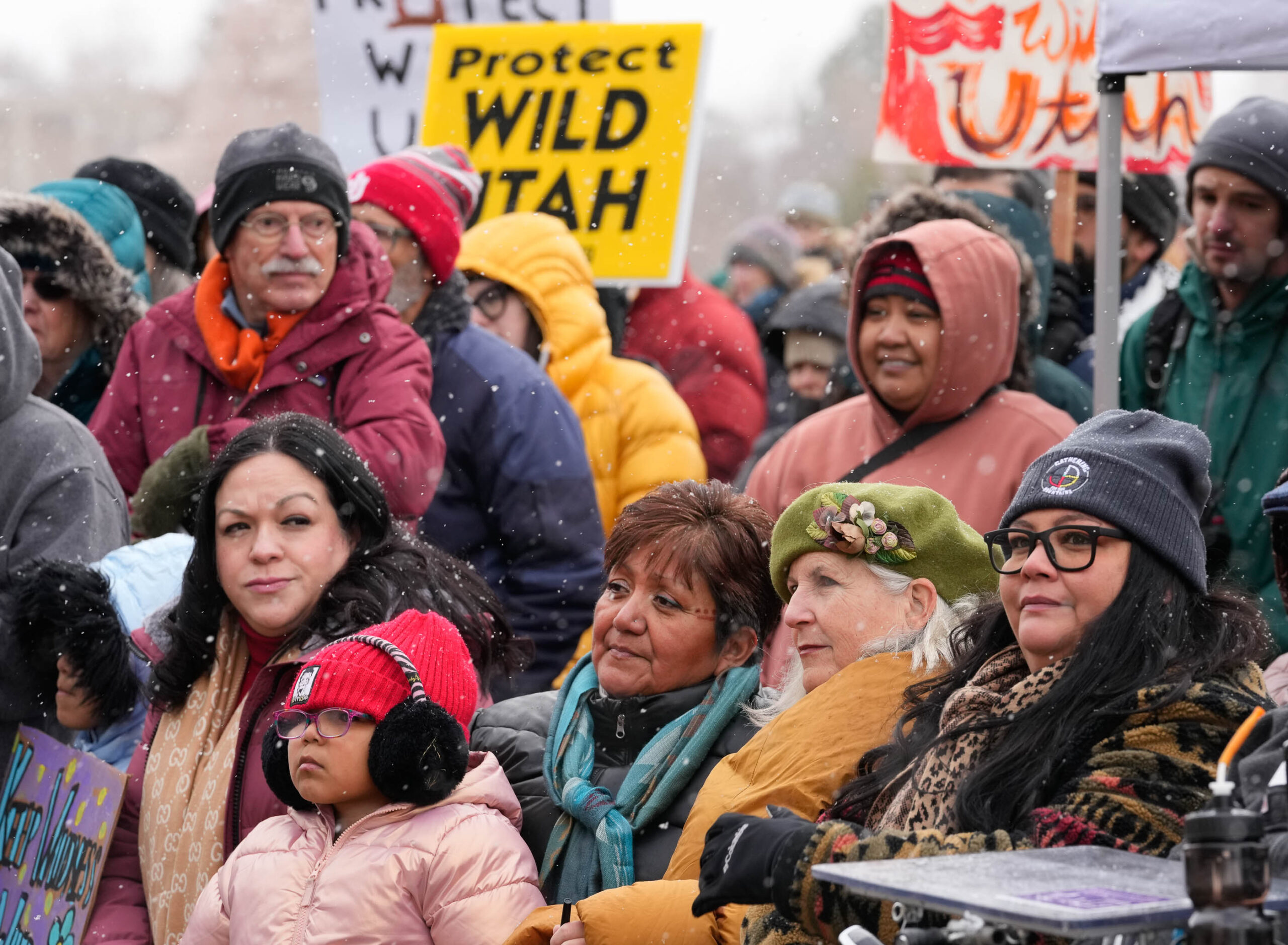
Gillard grew up in Salt Lake City, like many members of her tribe, removed from her ancestral lands. When she had a chance to visit the Grand Staircase region, she said that the oral histories about her people and their relationship to the land, told by her grandmother when she was young, sprang back to her. She has since moved to southern Utah, the region she considers her home.
In 1978, recognizing the importance of Indigenous peoples’ access to ancestral lands, President Jimmy Carter enshrined the sovereign rights of Native Americans to their culture and practices through the American Indian Religious Freedom Act. More recently, in Nov. 2021, Interior Secretary Deb Haaland and Dept. of Agriculture head Thomas Vilsack introduced Joint Order 3403, which not only re-affirmed Native access to subsistence resources and sacred sites on public lands, but further recognized “the power of native cultural practices and Indigenous Knowledge to improve resource management.”
Joint Order 3403 established the concept of Tribal co-stewardship, ushering in policies, infrastructure and agreements for Tribal co-stewardship of public lands and water, across public land management agencies. Nearly 150 Tribes have signed co-stewardship agreements since 2021, and in December 2024, Secretary Haaland filed her Third Annual Report on Tribal Co-Stewardship, outlining dozens of projects from Cape Cod (Mashpee Wampanoag Tribe and Bureau of Ocean Energy Management) to The Everglades and Biscayne National Parks (Miccousukee Tribe and National Park Service) to Redwood National Park (Tolowa De-ni’ National and the National Park Service). Each specific to its place and the parties involved, projects are wide-ranging and include Tribal involvement in a variety of management programs from fishery and forest conservation to climate change adaptation strategies.
As the report states, “Indigenous people are among the best conservation land managers in the world.” Co-stewardship models have been aimed at benefiting public lands management on behalf of all Americans, while ensuring tribes a seat at the table and an opportunity for reconnection through roles in hands-on management.
Following the successful inclusion of Indigenous voices in the establishment of Bears Ears National Monument, the call for consultation with associated Tribes went out in rewriting the new resource management plan for the Grand Staircase-Escalante National Monument, with the eventual goal of forming a formal co-stewardship agreement written into the final version of the document. Grand Staircase Escalante Partners, the non-profit friends group of the national monument, was charged with facilitating government-to-government talks between Tribal Leaders and the Bureau of Land Management. They subsequently hired Gillard, Davina Smith of the Navajo Nation and Georgie Pongyesva, a Hopi woman and Tribal consultant, to act as their cultural advisors in opening the door for talks.
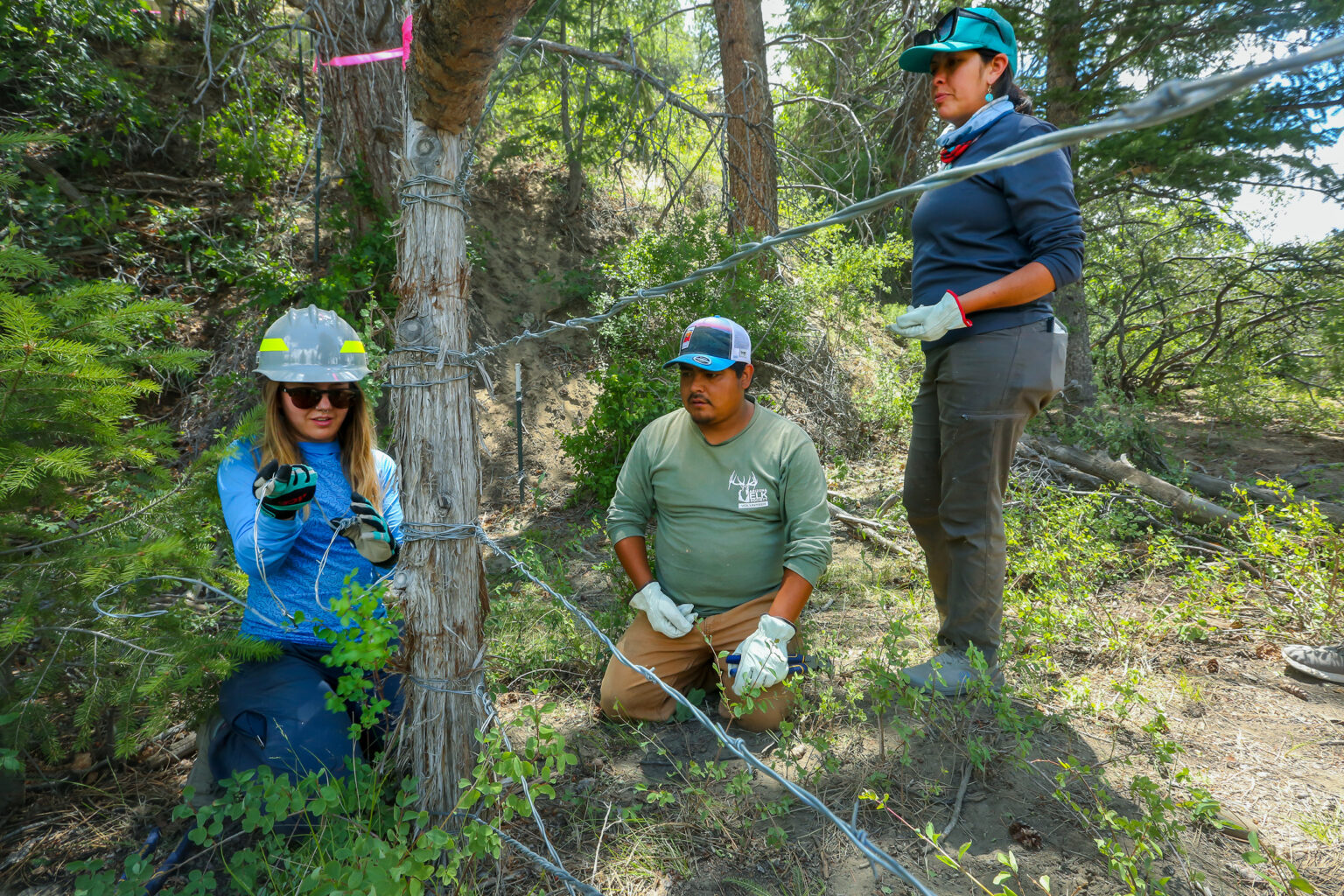
GSEP’s Stewardship Programs Manager Kaitlin Martin and the consultants lead several field tours around the monument with representatives of the six tribes with ties to the region, so that they could better offer their perspectives on the BLM’s new plan. Following the tours, Martin and Pongyesva, in an effort to broaden the reach of co-stewardship benefits, organized a stewardship-based pilot project on monument-adjacent Forest Service lands. The participants in this trip, and the ones which continue to take place, received transportation to and from Hopi, food, lodging, and were paid a stipend. While GSEP runs similar trips, which are volunteer based, the ability to participate in these programs can often be difficult for many Indigenous people due to the socioeconomic conditions they face. “Some of our participants don’t even have driver’s licenses, let alone the money to travel to someplace like Escalante for a project,” said Martin.
On June 22, 2024, eight members of the Hopi Tribe arrived at the Dixie National Forest, outside the small Utah town of Escalante, to participate in the pilot project. Their work involved making repairs to fencing around springs and building small rock structures to stabilize the watershed below them. Among the participants were Pongyesva and a young Hopi man, Jeremiah Lomayektewa, early in his professional and cultural development.
On a break from making repairs to an existing fence around one spring, Pongyesva and Lomayektewa walked to another one nearby. One which was not fenced and had been trampled by cattle. “This clay has the same feel of the clay around the springs at Hopi,” Pongyesva explained to him. “It could be a great candidate for restoration. We could add some check dams here and create pools to support plants and bugs and provide better drinking water. It will work up the food chain to the birds too.”
Not only can Indigenous perspectives highlight the merits of conservation or restoration, but traditional techniques can be of great benefit to land managers for their low cost through use of local materials. Another of the Hopi participants, Izaak Kaye, has experience building simple rock dams to shore up springs and drainages on Hopi. He was able to coach GSEP staff and Lauren Nickell, a hydrologist with the National Forest, on how to construct them during the trip. In return, she helped teach Kaye techniques for constructing wire fencing—a technique he has taken back to Hopi.
“This is not new to us at all,” said Pongyesva, of the stabilization practices. “We use the exact same techniques out in Hopi, and you can see evidence of it at sites across Hovenweep and Mesa Verde too. Now it’s just getting lined up with the scientific side of it. It is really cool to see them both come together.”
GSEP has continued organizing trips with members of Hopi, the Paiute Tribes of Utah and Havasupai, as well as leading a workshop at the Public Lands Alliance national conference designed to help other nonprofits meet co-stewardship goals ethically.
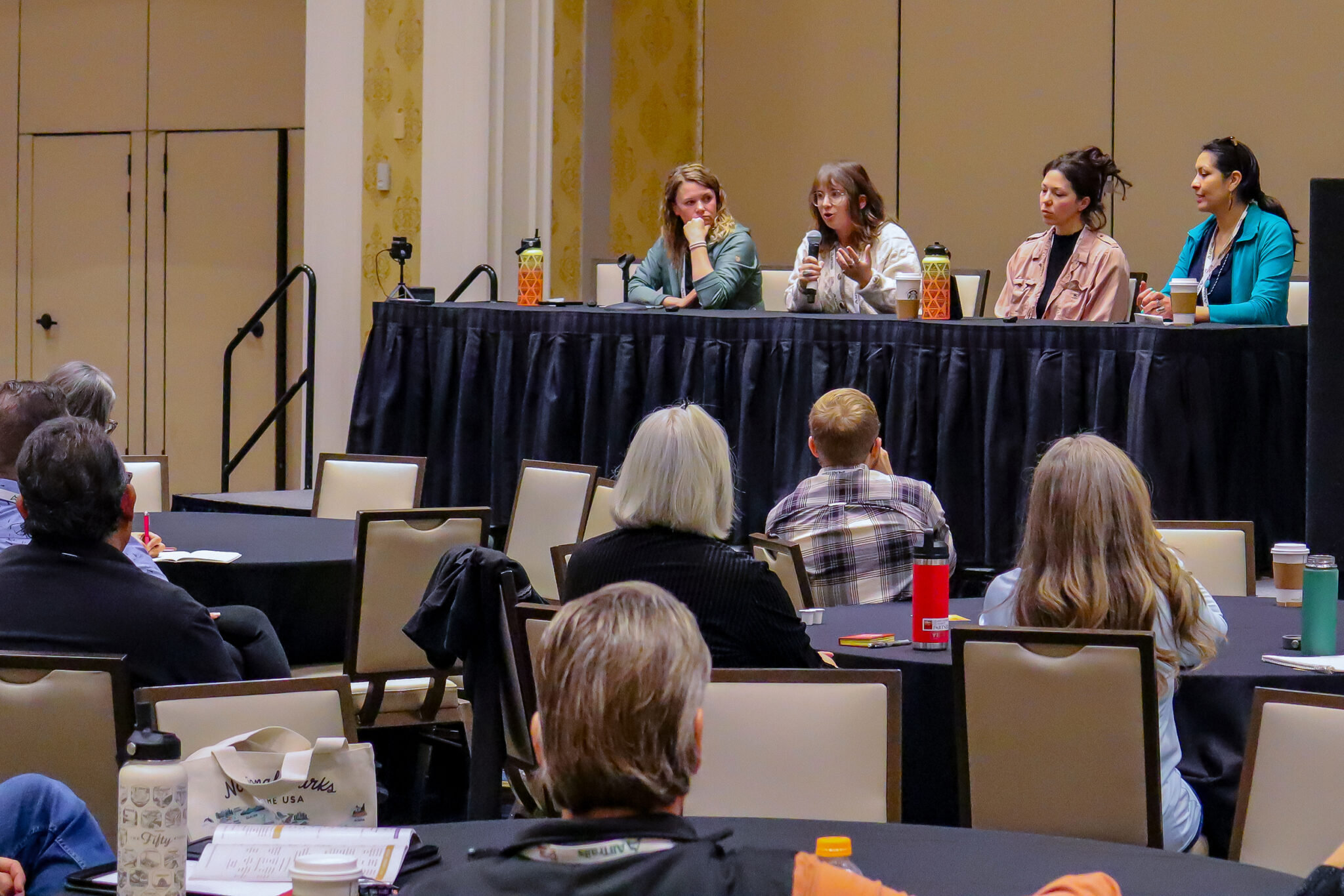
The local BLM office has also started to adopt the methods taught to GSEP by the Tribes due to their low cost and effectiveness. Kevin Berend, Conservation Programs Manager at GSEP, and Alex Engel, GSEP’s field supervisor, have been studying the efficacy of these structures. Berend explained that they work by slowing the flow of water through a stream, “allowing for greater infiltration, sediment deposition, and hydrologic connectivity to [their] surroundings.” Berend said washes with these structures installed saw a dramatic increase in plant life and stability within the first year.
There are two main types of simple rock structures; the first are one-rock dams, which help to control water flows through ephemeral drainages. The second are plunge pools, which are used to stabilize headcuts, or the point where an ephemeral spring begins incutting. The latter also retains more water and can diversify habitat. Berend has placed soil temperature and moisture probes in the ground around plunge pools, to see how they impact their surroundings throughout the year and correlate to rainfall amounts, which are also measured on site. Traditional techniques like this are inexpensive and could be installed across the landscape to help mitigate the impacts of grazing and motorized, human or animal powered recreation, improving the overall health of the landscape. As long as humans have interacted with the landscape, they have been forced to find ways to do so sustainably—these structures are examples of that.
“We carry that ancestral knowledge because we’ve lived here forever in the desert,” said Gillard. She describes the approach to Tribal land stewardship as being about balancing give and take. “For us it’s always about coexisting with the resources, talking our language to the resources and interacting with them in a holistic manner.”
Gillard described the Paiute relationship to springs specifically as one of stewardship. “There would be a medicine man, and their medicine was to work with a spring,” she said. “They would keep it clean, move debris and vegetation, and make sure that there’s nice clear water for the wildlife. They would also do prayers and leave offerings, creating a bond and relationship with that spring.”
The growing depth of connection and collective knowledge within Gillard and her community gained from co-stewardship, and having access to their traditional lands and practices, has helped them to better process feelings of sadness and loss. “I feel lightened from that grief by just being there in that landscape and being able to pray,” said Gillard.
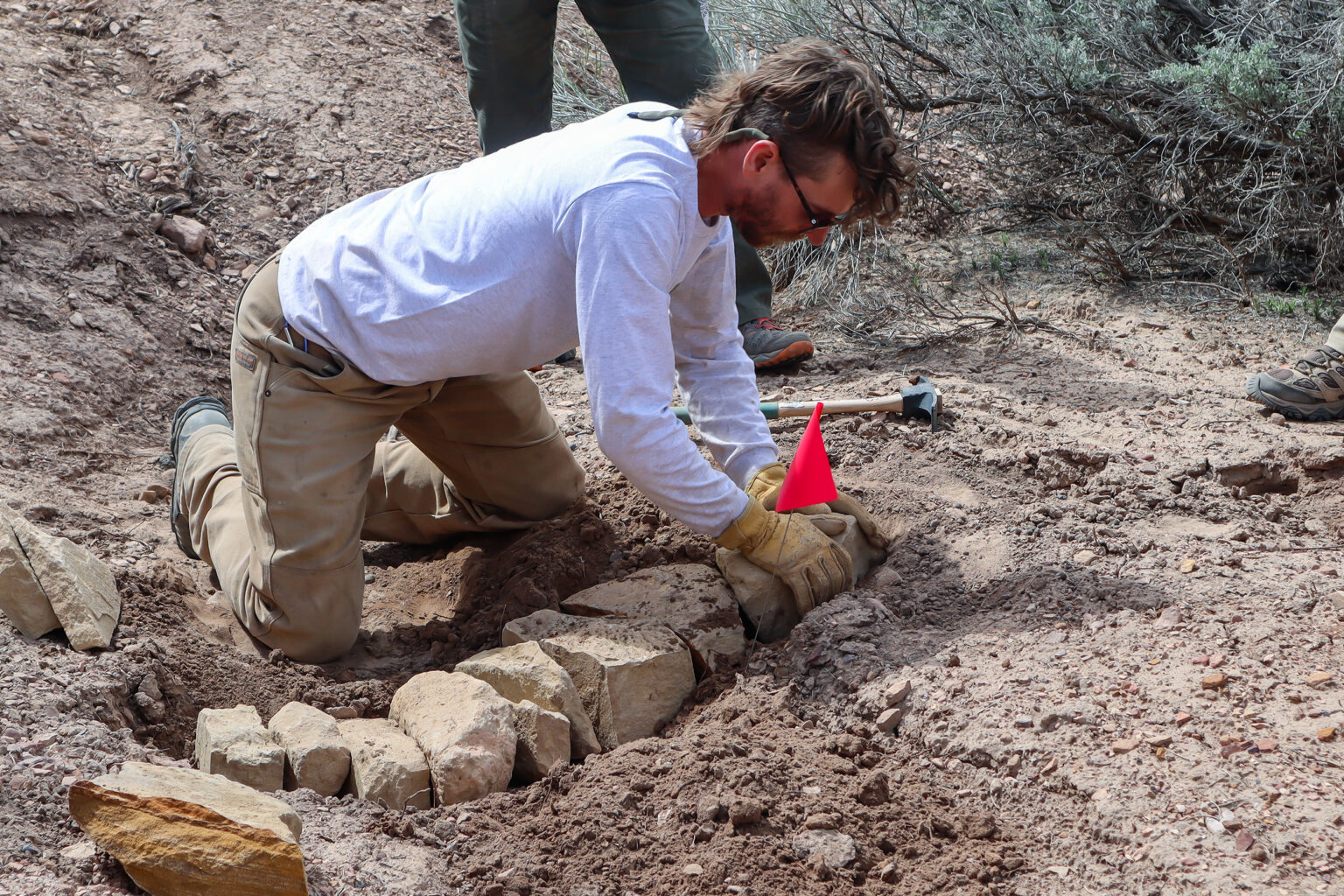
Each of the participants in GSEP-coordinated stewardship programs, including Lomayektewa and Kaye, have expressed feeling some level of healing and renewed connection to their culture as the result of being able to practice stewardship beyond their reservation boundaries. With the benefits of co-stewardship being broadly beneficial for the health of Tribal communities, one hurdle for enduring cooperation is overcoming potential differences with other public lands user communities such as ranchers, guides and recreators. “A tough point here is understanding that the recognition and elevation of Indigenous voices is not a threat to the system,” said Gillard. Her Paiute traditionalism speaks towards maintaining balance with the whole environment, including other people.
Gillard used to work at Pipe Spring National Monument, near Fredonia, Arizona, where, as an interpretive guide, she not only offered her Indigenous perspective of the area but also helped visitors understand the Latter-day Saint pioneer voice. She gave tours of the park, orchards and historic Windsor Castle. “I had to talk about the topic of ranching because that’s what Pipe Spring is; a cattle mission that’s historic for the [LDS] church,” she said. “I had to talk about the water resource being taken away from the Kaibab people and a fort being built on top of the mouth of that spring. When I finished my first tour, I went outside and I sat under some of the trees in the orchard and I felt so upset.”
She eventually drew a parallel between herself and the ranching community. “I carry all of my passion and my love for my culture and my ancestors and so do the descendants of those pioneers that came out here to homestead and to ranch,” she said.
Gillard has since made efforts to learn about modern ranchers’ perspectives and to share her own, but feels that the lack of diversity in the small communities of the region makes it difficult—something she hopes will change thanks to co-stewardship directives and programs like those at GSEP. “You have this topic now of diversity and inclusion and that by ignoring diverse voices we’re all the same—that is not correct. Neither of our communities are going anywhere. Our ancestors had to learn to live with each other 200 years ago. We have got to learn to live with each other now,” Gillard said.
On March 25, 2025, the Grand Staircase-Escalante National Monument Inter-Tribal Coalition announced their official formation, including Gillard and members from five other tribes. Their mission is to advocate for continued Tribal involvement and protect the GSENM region for future generations, despite changes in the U.S. political climate and difficulty in securing funds for conservation programs like those run by GSEP’s Martin and Berend.
“We are always going to be here. We’re always going to have a voice about the management of these lands because we are the first occupants,” said Gillard.
Republish
Republish Our Content
Corner Post's work is available under a Creative Commons License and under our guidelines:
- You are free to republish the text of this article both online and in print (Please note that images are not included in this blanket licence as in most cases we are not the copyright owner) but:
- you can’t edit our material, except to reflect relative changes in time, location and editorial style and ensure that you attribute the author, their institute, and mention that the article was originally published on Corner Post;
- if you’re republishing online, you have to link to us and include all of the links in the story;
- you can’t sell our material separately;
- it’s fine to put our stories on pages with ads, but not ads specifically sold against our stories;
- you can’t republish our material wholesale or automatically—you need to select stories to be republished individually;
- you have to credit us, ideally in the byline; we prefer “Author Name, Corner Post,” with a link to our homepage or the article; and
- you have to tag our work with an editor’s note, as in “This article was paid for, developed, and originally published by Corner Post. Corner Post is an independent, nonprofit news organization. See cornerpost.org for more.” Please, include a link to our site and our logo. Download our logo here.
 Originally from Denver, Colorado, Ian Marynowski settled into life on the Colorado Plateau nearly a decade ago and currently calls Moab, Utah, home. Having studied journalism at the University of Montana, he has since worked as a bike mechanic, ski guide, avalanche educator, barista and Aquatics Inventory and Monitoring (AIM) technician for the Colorado Natural Heritage Program.
Originally from Denver, Colorado, Ian Marynowski settled into life on the Colorado Plateau nearly a decade ago and currently calls Moab, Utah, home. Having studied journalism at the University of Montana, he has since worked as a bike mechanic, ski guide, avalanche educator, barista and Aquatics Inventory and Monitoring (AIM) technician for the Colorado Natural Heritage Program.
